Hartbeat Interview With Food Hub Red Tomato: Local, Sustainable and the Voice of the Farmer
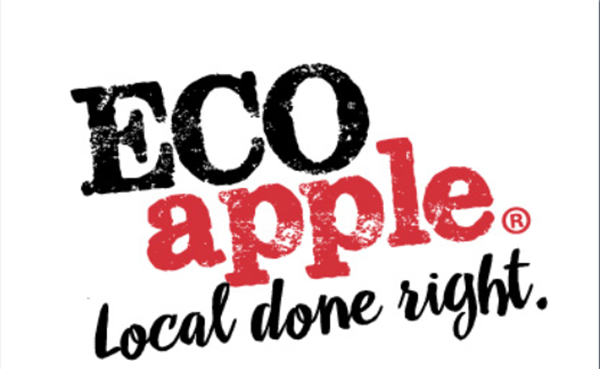 While the organic market continues to grow unabated (the Organic Trade Association estimated sales at $43 billion in 2016), consumer interest in products with other distinctions like fresh, local and sustainably grown continues to rise as well. The Hartman Group’s Sustainability 2017 report finds that consumer definitions of sustainability are more likely to reflect future and farm/land-oriented meanings than in the past — underscoring a sense of a responsibility to future generations, especially in relation to agriculture.
While the organic market continues to grow unabated (the Organic Trade Association estimated sales at $43 billion in 2016), consumer interest in products with other distinctions like fresh, local and sustainably grown continues to rise as well. The Hartman Group’s Sustainability 2017 report finds that consumer definitions of sustainability are more likely to reflect future and farm/land-oriented meanings than in the past — underscoring a sense of a responsibility to future generations, especially in relation to agriculture.
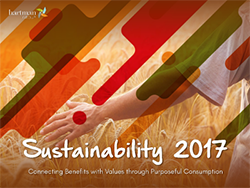 Similarly, consumers across the board see locally sourced foods and beverages as more sustainable as well as fresher and healthier: 57 percent of consumers who rated “natural agricultural methods/practices” important for foods/ beverages indicated they are willing to pay an extra 50 percent or more for such products, as did 56 percent of consumers who rated “minimizing pollution of air, water, soil” important for foods and beverages.
Similarly, consumers across the board see locally sourced foods and beverages as more sustainable as well as fresher and healthier: 57 percent of consumers who rated “natural agricultural methods/practices” important for foods/ beverages indicated they are willing to pay an extra 50 percent or more for such products, as did 56 percent of consumers who rated “minimizing pollution of air, water, soil” important for foods and beverages.
For an in-depth understanding of how sustainably produced, eco-friendly fruit and vegetable products are delivered to the marketplace today, we interviewed Laura Edwards-Orr, Executive Director, and Sue Futrell, Director of Marketing, at Red Tomato in Massachusetts. Red Tomato is a food hub that connects midsize regional fruit and vegetable growers to supermarkets and institutions in New England, New York and the mid-Atlantic. The organization has worked for over 20 years in developing a regional food system that focuses on marketing wholesale growers and their sustainable growing practices. Among several initiatives, Red Tomato helped found the Eco Apple® and Eco Peach™ programs to promote sustainable growing practices in orchards in the Northeast. The program is a collaboration among growers, scientists and nonprofits, focused on using research and field experience to manage orchards in an ecologically sound way.
With organics on one end of the spectrum and conventional agriculture on the other end, how would you define where "Eco Apple®" (or comparable fruits or vegetables) falls on that spectrum?
Due to the intensive research, training, collaboration and field experience it takes to manage an orchard within the Eco growing protocol, we would put our fruit right next to organic on the spectrum. But in many ways it’s not a linear continuum — put another way, you can place Eco and organic near the center of a circle of sustainable practices, with Eco possibly stronger on some aspects when compared to organic in New England and organic a bit closer to the center in a national context.
There is also tremendous range in those surrounding circles. What people often call “conventional” represents 90+% of farming in the U.S. Many of those farms, including those we work with, are strongly committed to sustainable practices, like cover cropping, soil health and biological pest management, without being certified for it, because they believe it is the right way to farm.
What are some of the obstacles to selling eco-enhanced products like "eco-apples” today?
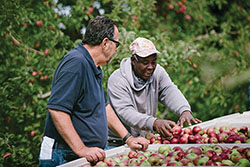 Grocery shelves are crowded with sustainability claims, and shoppers as well as produce buyers are under constant time and price pressures. Within these confines, it’s much easier to offer an either/or decision, such as conventional or organic. Introducing a third option that is less well-known is difficult to do under these circumstances. It takes time to develop personal relationships and conversations with both produce managers and consumers to explain what Eco is and why it’s important.
Grocery shelves are crowded with sustainability claims, and shoppers as well as produce buyers are under constant time and price pressures. Within these confines, it’s much easier to offer an either/or decision, such as conventional or organic. Introducing a third option that is less well-known is difficult to do under these circumstances. It takes time to develop personal relationships and conversations with both produce managers and consumers to explain what Eco is and why it’s important.
The strength of Eco in the New England market is when consumers see it connected to local or regional distinctions. Our Eco practices are specifically tailored to this region and allow growers to produce high-quality commercial fruit with a strong assurance that they are maintaining good stewardship of the entire orchard. This includes ecological systems — pollinators, soil and water — and humans, including workers, pick-your-own customers, shoppers. The strong interest in local produce has helped open the door for these producers to get their products in front of shoppers in grocery stores in a way that would otherwise be more difficult.
What do you think are some of the least understood narratives behind farming today, especially those farmers working in the context of sustainability? What do retailers, and maybe even their shoppers, seem to be least aware of?
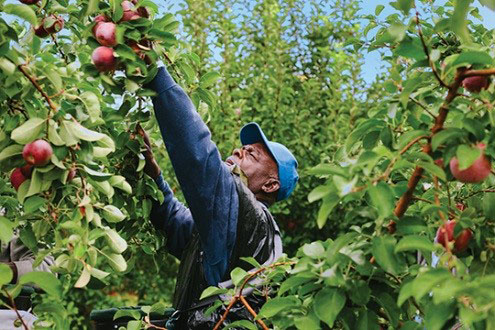 One of the most common misperceptions we hear from consumers and even good food advocates today is that a hyper-focus on direct marketing and ultra-local purchasing is the main economic and environmental solution to our food-systems challenges. While farmers markets and CSAs are an important way of engaging with farmers, they aren’t widely accessible, and most fruit and vegetables are still bought at the grocery store. Until the sustainable food system can support more wholesale-scale farmers supplying larger markets, we’re not going to see a significant shift.
One of the most common misperceptions we hear from consumers and even good food advocates today is that a hyper-focus on direct marketing and ultra-local purchasing is the main economic and environmental solution to our food-systems challenges. While farmers markets and CSAs are an important way of engaging with farmers, they aren’t widely accessible, and most fruit and vegetables are still bought at the grocery store. Until the sustainable food system can support more wholesale-scale farmers supplying larger markets, we’re not going to see a significant shift.
Wholesale buyers sometimes have a perception that supply is limited and local is expensive. By aggregating from multiple farms in our region, Red Tomato is able to meet the demand of large grocery chains at a price that works for the farmers. Logistics is often the primary missing link between talented growers, wholesale buyers and affordable products for consumers.
Another really challenging narrative that many consumers carry about farming is that it can be an “all-or-nothing” approach (i.e., “always do this, never do that”), especially concerning pesticides and pest-management practices. If we really want to move agriculture toward the most ecological, most sustainable practices in ways that support farms as well as eaters, we’d like to see consumers and retailers focus less on banning specific substances (and other “all-or-nothing” types of criteria) and more on support for a wide range of ecological practices. Ecological farming varies across the country, and celebrating these regional differences would allow for farmers to focus more on results, like pollinator health and reduced toxins in the environment.
What do you think may influence greater demand for sustainably enhanced fruit and produce today?
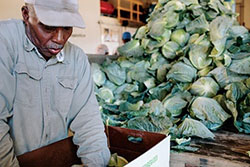 The most impactful thing that we can do for shoppers is highlight the voice of the farmer. When people hear the wisdom and experience our growers have and their passion for “doing the right thing” and being stewards of their land and communities, they feel a deep connection with the food that they grow. Showing, rather than telling people, how food is grown and what goes into decision making for sustainability that accommodates the environment, worker well-being and farm economics can help break through the onslaught of labels in a supermarket setting. And of course, tasting a fantastic local apple or tomato that was grown with care for the environment, the workers and the quality of the produce is worth a thousand words!
The most impactful thing that we can do for shoppers is highlight the voice of the farmer. When people hear the wisdom and experience our growers have and their passion for “doing the right thing” and being stewards of their land and communities, they feel a deep connection with the food that they grow. Showing, rather than telling people, how food is grown and what goes into decision making for sustainability that accommodates the environment, worker well-being and farm economics can help break through the onslaught of labels in a supermarket setting. And of course, tasting a fantastic local apple or tomato that was grown with care for the environment, the workers and the quality of the produce is worth a thousand words!
